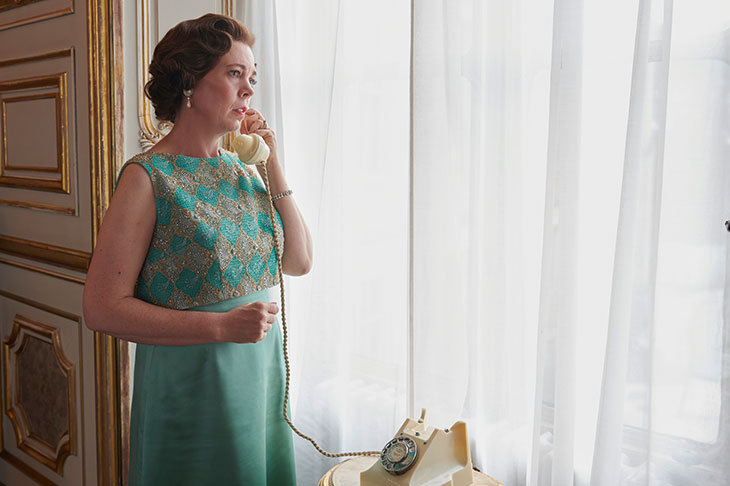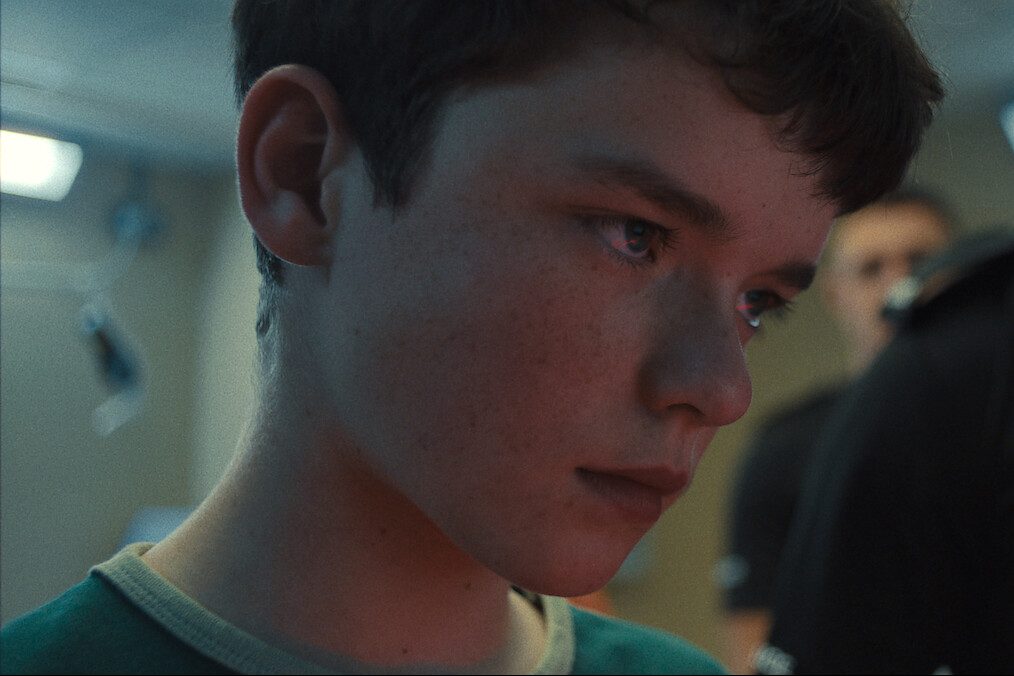The Duke and Duchess of Cambridge recently met with survivors of national disasters. They were attending the launch of a new charity. The Duke made a short, supportive speech. But much more important was the private time he and the Duchess spent with the survivors. As Lord Dannatt, who was hosting the public meeting said: ‘Their empathy with those affected demonstrated the vital link between the royal family and people of this country.’
That vital link is indeed one of the key strengths of the monarchy. Countless (and almost always unsung) hours are spent every year by royal family members with people needing recognition or comfort, as they visit schools, factories, charities, people’s homes. Their occasional shortcomings — as witnessed recently in the alarming allegations swirling around Prince Andrew — are the exception, not the rule.
When the Queen went to Grenfell Tower she bestowed a balm of sympathy and understanding that no politician could ever give. She has done that all her life. The Cambridges clearly understand, as does Prince Charles, that the kindness underpinning the relationship between the monarchy and the people is at the core of our uniquely successful constitutional settlement.
That can appear humdrum and is thus almost entirely missing from Netflix’s much-heralded series The Crown.
To be fair, in the early films the Queen’s childhood and youth were, in places, quite touching. Claire Foy played her well and revealed to younger generations for the first time the extraordinary sense of duty with which the Queen is imbued. Foy has now been replaced by Olivia Colman, who has said that she is ‘thrilled to play the Queen, warts and all’. The new, third series covers the 1960s and early ’70s and shows the Queen’s children growing up. As in the first two series, much of the acting is good and the locations and costumes are stunning. So the whole show has beguiling elements.
But the basic problem throughout is that, through invented conversations and often incidents, The Crown purports to describe the private lives of real people. The closer it gets to the modern day, the more intrusive and sometimes cruel it becomes.
No other prominent family would tolerate its privacy being invaded in this way. They would have taken the writer of the series, Peter Morgan, and the production company to court to stop any such assault.
The British royal family alone faces almost insuperable legal and constitutional difficulties in protecting its privacy or in having untruths stated about its members corrected.
The best analysis of the truths and lies in The Crown is given by the distinguished royal historian Hugo Vickers in his excellent short books, The Crown: Truth and Fiction and The Crown Dissected. He shows that mistakes and hurtful falsehoods are legion. ‘I do not approve of The Crown,’ he writes, ‘because it depicts real people in situations which are partly true and partly false; but unfortunately most viewers take it all as gospel truth.’
The Crown takes constant liberties with history, as it does with people. Consider the portrayal of the relationship between the Queen and President and Mrs Kennedy in 1961. That year the Queen made an important visit to the then unstable Commonwealth country of Ghana. She helped persuade its independent-minded leader, Kwame Nkrumah, to remain in the Commonwealth. It was a triumph.
But The Crown alleges that the Queen went only to upstage the glamorous new American first lady. This is a complete invention, deeply unfair to both the Queen and Jackie Kennedy. The distinguished American commentator Peggy Noonan, President Reagan’s former speechwriter, called the program’s treatment of the Kennedys ‘vulgar, dumb and careless’.
The Crown’s real nastiness is deployed against Prince Philip, with whom Princess Elizabeth fell in love during World War Two and with whom she has now had 72 years of successful marriage. As Vickers writes, in the early series, ‘Prince Philip [is] portrayed as a fractious, bumptious “Jack the Lad”, very much the villain… little more than a self-centered philanderer’.
Perhaps the most shocking lies — which must have caused real distress to Prince Philip — are in the episode ‘Paterfamilias’. This deals, inter alia, with the death of Prince Philip’s beloved sister Princess Cecile, whose plane crashed while en route from Germany to London in November 1937. All on board were killed.
The program alleges that Philip had been gated at his school, Gordonstoun, for bad behavior, so Cecile had flown to England to see him — and died, along with other family members and the baby she was carrying. Untrue. In reality, she was en route to a family wedding.
The film shows the stunned young Philip going alone to the funeral in Nazi-dominated Germany where he meets his father, Prince Andrew of Greece, who shouts at him: ‘It’s true, isn’t it, boy? You’re the reason we are all here burying my favorite child.’
Again untrue. In the real world the young Philip travelled to the funeral from England with his father. Nonetheless, as Hugo Vickers writes: ‘The implication of this episode is that Prince Philip as good as killed his sister.’ The real Philip loved Cecile greatly and her death is known to be one of the greatest shocks in his life. The Crown turns a shocking family tragedy into a dishonest, very hurtful melodrama. Why?
Prince Philip is blunt, but he is at core very kind. Remember his supportive letters to Diana. He is also a superb public servant. He was warning about the environment and wildlife decades before those became fashionable causes. He deserves thanks for his constant support for science, and above all for his creation of the Duke of Edinburgh’s Award scheme, which has helped millions of young people around the world.
None of that is of interest to the makers of The Crown.
All this matters not only because The Crown is hurtful but also because, beneath its enticing veneer, much of it is, in modern parlance, fake news. Those falsehoods will be accepted by many millions of people around the world as truths.
Second, because by dwelling on personal weaknesses in lavish settings, it tries to show that the heart of constitutional monarchy is debauched and frivolous and irrelevant to the people. In the new series, Colman portrays the Queen as a cold mother who told Harold Wilson that she was unable to weep at the Aberfan disaster, because ‘I have known for some time there is something wrong with me. Deficient’.
When considering why The Crown is thus, it is worth remembering that Peter Morgan has revealed what drives him. In an interview with the Sunday Times in October 2017, he said that the Queen herself is of ‘limited intelligence’. ‘She’s ninetysomething years old and barely knows what the internet is.’ She and her family are not really humans, they are ‘survival organisms, like a mutating virus’. Moreover, belief in God and the teachings of Jesus Christ, which Morgan knows inspire the Queen’s whole life, is to him ‘deranged’.
The monarchy itself is clearly ‘insane’: ‘[I’m] blessed because the system she is in is so ridiculous and illogical that even just to unpack it from a point of view of reason or logic is such a joy.’
Plus ça change. Back in the 1940s George Orwell famously pointed out that many English intellectuals are too snobbish to understand the value of monarchy to people ‘less gifted’ than themselves. Mr Morgan’s apparently republican contempt for the Queen and her family is just the latest example. That contempt, cleverly concealed in much of the pomp and finery of The Crown, does the people of this country a great disservice.
The Queen is among the greatest monarchs we have ever had. She has given her life to serving this rapidly changing country for almost all of her 93 years. In poll after poll, the vast majority of the British people consistently support the monarchy. They seem to understand their good fortune in not having had revolving-door presidents for the past 70 years but one real Queen, inspired by a lifelong sense of decency, common sense, love of country and Christian duty.
The Queen, and indeed the British public, deserve better than The Crown.
This article was originally published in The Spectator’s UK magazine. Subscribe to the US edition here.


























